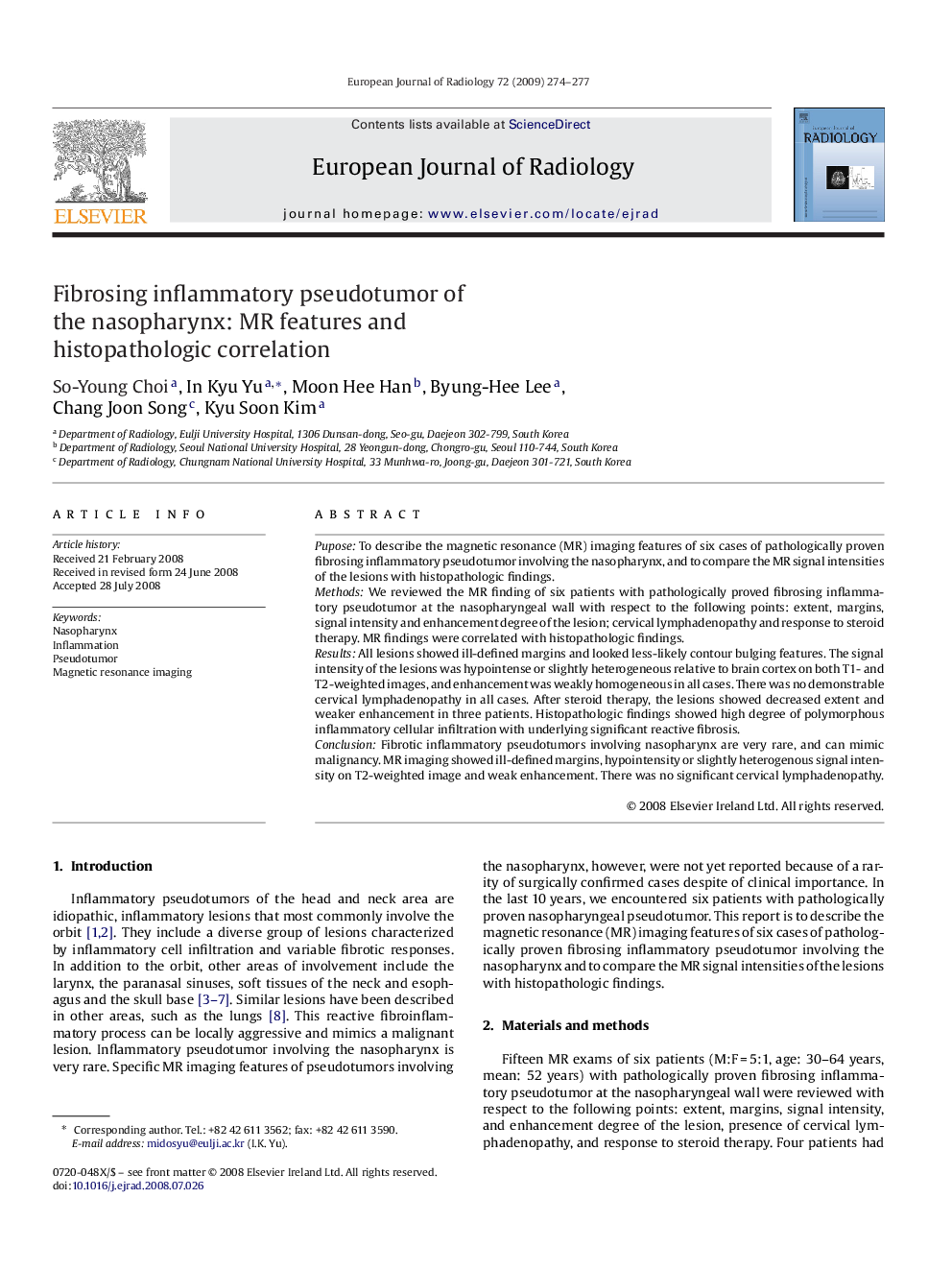| Article ID | Journal | Published Year | Pages | File Type |
|---|---|---|---|---|
| 4227266 | European Journal of Radiology | 2009 | 4 Pages |
PuposeTo describe the magnetic resonance (MR) imaging features of six cases of pathologically proven fibrosing inflammatory pseudotumor involving the nasopharynx, and to compare the MR signal intensities of the lesions with histopathologic findings.MethodsWe reviewed the MR finding of six patients with pathologically proved fibrosing inflammatory pseudotumor at the nasopharyngeal wall with respect to the following points: extent, margins, signal intensity and enhancement degree of the lesion; cervical lymphadenopathy and response to steroid therapy. MR findings were correlated with histopathologic findings.ResultsAll lesions showed ill-defined margins and looked less-likely contour bulging features. The signal intensity of the lesions was hypointense or slightly heterogeneous relative to brain cortex on both T1- and T2-weighted images, and enhancement was weakly homogeneous in all cases. There was no demonstrable cervical lymphadenopathy in all cases. After steroid therapy, the lesions showed decreased extent and weaker enhancement in three patients. Histopathologic findings showed high degree of polymorphous inflammatory cellular infiltration with underlying significant reactive fibrosis.ConclusionFibrotic inflammatory pseudotumors involving nasopharynx are very rare, and can mimic malignancy. MR imaging showed ill-defined margins, hypointensity or slightly heterogenous signal intensity on T2-weighted image and weak enhancement. There was no significant cervical lymphadenopathy.
